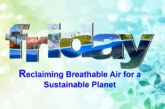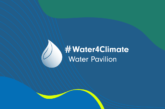
Dr. Arvind Kumar*

There has been increased attention put on the financial resources needed to help developing countries mitigate and adapt to climate change (climate finance). The governance and distribution of climate finance have implications for the full range of human rights, including the rights to life, health, food, water, housing, and culture, among others. During the UN Climate Change Conference (COP27) in Egypt, participating countries reiterated their commitment to limit global temperature rise, enhance efforts to reduce emissions, address climate impacts, and provide support to developing nations. Climate change is a human rights issue for the millions of people and communities around the world experiencing rising sea levels, increasingly severe floods and storms, melting glaciers, groundwater contamination, health impacts, forced relocation and displacement, and other adverse impacts rightly recognized by UNFCCC the UN Human Rights Council and others. In connection with these impacts, these UN bodies have also recognised that the responses taken to address climate change have direct and indirect implications for the full and effective enjoyment of human rights.
It is now well documented that some of the projects financed by the Clean Development Mechanism (the SDM’s predecessor) and other climate finance tools have resulted in human rights violations. The most egregious violations have occurred in the context of hydroelectric projects, which often result in forced displacement, and biofuel projects, which can lead to displacement as well as increases in local air pollution, food shortages, labor violations, and a host of other problems for local communities. Estimates for the scale of overall climate finance needs vary, but will run into hundreds of billions, if not trillions of US dollars annually after 2030. The IPCC Special Report on Global Warming of 1.5°C released in 2018 projected annual average investment needs in the energy system of approximately USD 2.4 trillion between 2016 and 2035, representing about 2.5% of the world’s gross domestic product (GDP) (IPCC, 2018). In 2022, the Independent High Level Expert Group on Climate Finance estimated USD 1 trillion a year is needed by 2030 to transform economies in emerging markets and developing countries.

Uncertainty surrounding the magnitude of future loss and damage makes it difficult to determine the required funding and its allocation. Furthermore, the lack of political will from developed nations to acknowledge their role in climate change and take appropriate action poses a significant hurdle in securing commitments for funding loss and damage initiatives. These challenges are only a few examples, and there may be additional complexities that arise during negotiations. The creation of climate finance funds could encounter several challenges. Distributing funds equitably among developing countries is a key challenge, with developing nations arguing for a larger share due to their increased vulnerability to climate-related disasters. Ensuring effective and transparent use of funds is another challenge, as developing countries may call for monitoring mechanisms to prevent misuse and corruption.
India a flag bearer of climate finance for global south
In the recent held G-20 meeting on climate change, PM Modi said Countries of the global South are particularly impacted by climate change and environmental issues. We need enhanced action on commitment under the UN climate convention and the Paris agreement. This will be crucial in helping the global South fulfilling development inspirations in a climate-friendly way. The Prime Minister exerted pressure on the West to act. Talking about Ocean Economy he said they support the livelihoods of over three billion people across the globe as they are a crucial economic resource; especially for the small island States. Responsible use and management of ocean resources is of vital importance. I look forward to the adoption of G20 high-level principles for sustainable and resilient blue and ocean-based economy. India pushed into the landscape of climate finance, highlighting the gap between the current and desired investment levels. The roundtable recognized the role of public finance in increasing climate investments, while emphasizing the need for scaling up private finance through policy, regulatory and market making measures, creating a better enabling environment for innovation and deployment of low-carbon technologies. The discussion proposed several avenues to bridge the climate finance gap, including policy and regulatory measures such as taxonomy and disclosures, innovative financial mechanisms included blended finance, and the mobilization of funds from institutional investors such as insurance and pension funds.

India holds a prominent position in the global efforts to address climate change due to its large population, considerable emissions, and susceptibility to the consequences of climate change. As COP 27 approached, India likely reiterated its stance on climate equity, advocating for the principle of “common but differentiated responsibilities and respective capabilities.” This principle emphasizes that developed nations, having historically contributed the most to greenhouse gas emissions, should play a leading role in offering financial and technological assistance to developing countries in their endeavours to combat climate change and manage its detrimental impacts. During its negotiations India focused on the principles of equity and the best available scientific evidence to draw attention to the unfulfilled commitments of developed countries.
It is worth mentioning here that India is on track to meet its NDC goals and India’s revised NDC commitments have significantly increased targets on emissions intensity reduction and renewable energy investments. Corresponding investments required in mitigation and adaptation would also have to be increased. While estimates vary between $ 150 and $ 200 billion per annum for NDC and Net Zero goals, it is imperative that domestic financial intermediation for climate investments through banks and capital markets is scaled up disproportionately from its present levels.This would need directed policy action, supportive regulation to increase climate finance and prudent trade-offs in progressively managing increased systemic risks which could accrue from transition to low carbon economy, in addition to active commitment to low carbon transition from the banking, financial services and insurance industry.
Way Forward
To effectively address the magnitude of the climate finance issue, a comprehensive approach that combines various financing sources is crucial. Besides expressing support for establishing climate finance there is also need for highlighting transparent and accountable governance of the fund to ensure the efficient utilization of allocated resources. The Sustainable Development Management (SDM) safeguards should explicitly recognize, incorporate, and build upon human rights law and international labor standards. Commit to a “no harm” approach whereby SDM funds are only used to finance projects that fully respect the human rights of affected people and communities. Require project proponents to disclose information about the project and accept input from affected communities and individuals at the earliest possible point in the project planning process, and to sustain an ongoing dialogue with the public throughout project development and implementation. To avoid adverse effects on people and the environment wherever possible, and to implement measures to mitigate any adverse effects that cannot be avoided. Community participation in the determination of proper mitigation measures should be ensured. For projects that result in displacement of persons or communities there should be adequate resettlement opportunities, financial compensation, and other services as may be necessary to fully mitigate adverse effects on displaced persons and host communities. There should be periodic monitoring and reporting on compliance with environmental and social safeguards, preferably through a third party verifier and an independent grievance mechanism whereby parties that are harmed by SDM funded projects can submit a complaint and request redress for those harms. Decision makers can improve the effectiveness of their communications to constituent communities and encourage adaptation and ensuring they have the resources and capacities to bring about societal resilience.
*Editor, Focus Global Reporter



